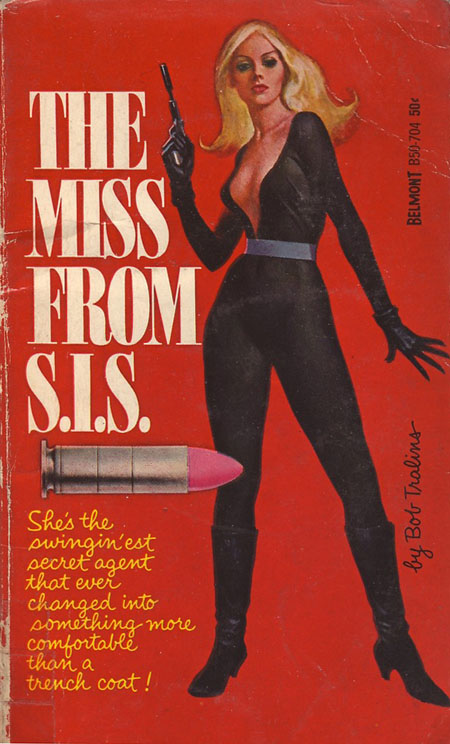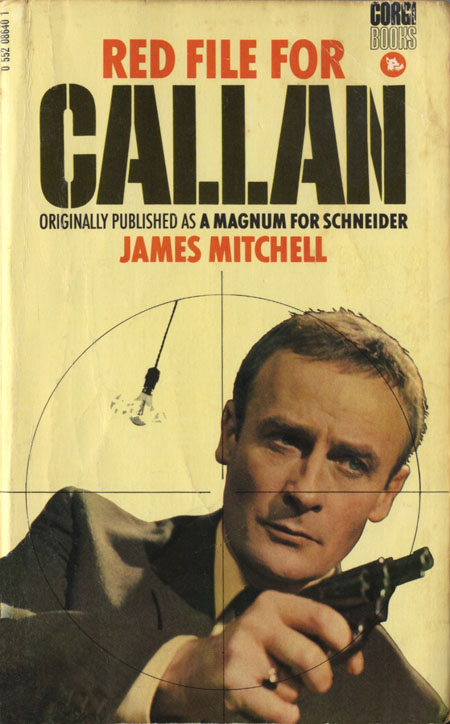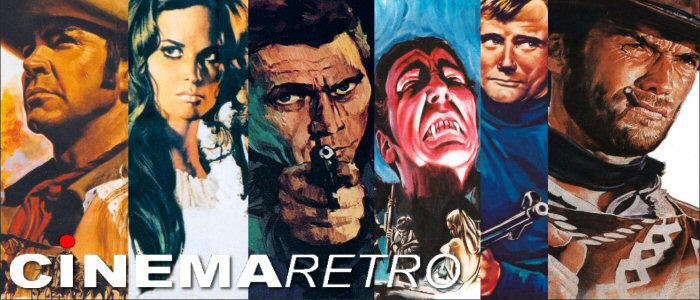
By Dean Brierly
There are all manner of spy
cinema websites scattered about the Internet, but only one that is devoted
exclusively to the source material for the many espionage films that have taken
up permanent residence in our collective consciousness. Most filmgoers rarely
give thought to the literary antecedents of their favorite silver screen spy,
yet there would be no James Bond, Harry Palmer or George Smiley if Ian Fleming,
Len Deighton and John Le Carre hadn’t created them. Fortunately, one man had
the perception to recognize this oversight, plus the expertise and dedication
to create “Spy Guys & Gals,†a cyber shrine to the numerous fictional
agents — male and female — that have populated espionage fiction for the past
five-plus decades. His name? Masteller. Randall Masteller.
A lifelong devotee
of spy novels, Masteller began researching the topic for a possible book in
2001, but eventually decided that a website was a more realistic option, and
launched the site in early 2006, dedicating it to “… the many, many men and
women who, at least in fiction, have defended our freedoms against all forms of
enemies, foreign and domestic. Well, granted, a few of them were just in it for
the money and many were only after the excitement, and sex played a huge role
in the motivation of more than a few. But still, their actions helped not only
preserve our way of life (on paper), but also brought us, the readers, many
hours of escapism and vicarious pleasure.â€
While the focus is, quite naturally, on the
intrinsic qualities of the books themselves, Masteller does offer his takes on
the fictional characters that also appeared on the big screen and/or
television. It’s fun to compare the literary and cinematic incarnations of
spies like Jason Love, the 40-ish country doctor turned spy who debuted in
James Leasor’s 1964 novel Passport to
Oblivion, and then appeared as a considerably older man played by David
Niven in Where the Spies Are in 1965.
Or Jason Bourne, the fictitious CIA assassin whom Robert Ludlum introduced to
readers back in 1980, and who subsequently appeared in a 1988 television
miniseries starring Richard Chamberlin before Matt Damon put his stamp on the
character in the much more action-driven 2002 film.
Masteller has limited the
site to spy fiction produced since the end of World War II, but that’s the only
limiting thing about it. To date, “Spy Guys & Gals†includes some 560
series covering 4,281 books. (Masteller must have a very understanding family.)
His website currently receives about 100 visits a day, and he continually
updates it with new books, write-ups and artwork. The cover scans alone are
amazing and can provide hours of enjoyment.
Each series (which must
have at least two installments to be included) has its own page, with a series
description, list of books, plot synopses, publishing history, author bio, and,
most entertaining, Masteller’s entertaining opinions on the recurring character.
Of 007, he writes: “There are many spies in fiction which many might claim are
better than Bond. George Smiley is certainly smarter. Quiller is more adaptive.
Sam Durrell is more resilient….No one, however, can ever take the place of
Bond.â€
In addition to the agent
with the famous license to kill, the site honors less well known but equally
deserving characters, some of whom also made it to the screen, if only once. Prominent
among these are John Gardner’s Boysie Oakes, the cowardly killer in The Liquidator, filmed in 1965 with Rod
Taylor and Jill St. John; and Adam Hall’s Quiller, one of spydom’s most
realistic and resourceful characters, whom George Segal brought to life in the
grey and gritty The Quiller Memorandum
(1966).

Then there are those spies
that for some reason never made it to the screen. Arguably the best of these is
Giles Yeoman, a sardonic and resourceful research scientist who is repeatedly
pressured into working for a duplicitous arm of the British secret service. The
Yeoman books were written by Martin Woodhouse (who also penned early episodes
of “The Avengersâ€), and are notable for their inventive plotting, engaging
blend of humor and suspense, and in-depth characterization. Yeoman would have
made a great film character, similar in many respects to Michael Caine’s
persona in the first three Harry Palmer films.
My favorite character on
the site just might be Francis Xavier Killy, a lay brother and the key enforcer
for the Inquisition, the enforcement arm of the Catholic Church in Simon
Quinn’s “Inquisitor†series. A hit man for the Vatican? You gotta love it. And Masteller
doesn’t neglect the distaff side of spying, devoting pages to (among others)
James Yardley’s Kiss Darling, Jimmy Sangster’s Katy Touchfeather, Peter
O’Donnell’s Modesty Blaise and James Eastwood’s Anna Zordan. Writes Masteller:
“Oh, how I wished I had met Anna Zordan in my younger days! Of course, she
probably would have judo-thrown me or karate-chopped me or just shot me when she
found out my intentions. Or laughed. Or said yes.â€
The declassified
biographical information on Masteller’s website paints a picture of a somewhat
mysterious figure. The dramatic impact of seeing Thunderball at age 14 instilled an immediate yen for a life of
action and intrigue. (Although curiously, it did not inculcate a love of
shaken, not stirred martinis.) Three years later Masteller joined the Navy,
where his facility for languages eventually earned him a position as a cryptologic
technician with a top-secret clearance. He spent over a decade working for the
Naval Security Group attached to the NSA.
While the job entailed
extensive travel to exotic locations, it did not, unfortunately, bring
Masteller into contact with the equivalent of a Domino Vitale or Emilio Largo. Like
so many of us, he has lived out his secret agent man fantasies in the novels of
Donald Hamilton (Matt Helm), Brian Freemantle (Charlie Muffin), Edward S.
Aarons (Sam Durell), James Mitchell (David Callan) and hundreds of other
writers of espionage fiction. Of them all, Masteller feels closest to Quiller.
“I would love to be identified with Quiller,†he said when interviewed
recently. “I know I really can’t because he was a lot smarter than I, but I
loved his attitude and his approach to life.â€
Masteller’s site is a true
labor of love, and a habit-forming tribute to the world of spy-fi, from
pantheon writers like Fleming and Deighton to enjoyable trash like J.J. Montague’s
Black Swan series, Joseph Rosenberger’s C.O.B.R.A. books, and Bob Tralins’ The
Miss From S.I.S. series, the latter aptly described by Masteller in these
terms: “I cannot say a lot bad about these lightweight
tales, though there isn’t much good to say, either. They have small amounts of
titillating humor, minute doses of fairly good action, and that’s about it. The
best word might be harmless. Better yet, think of cotton candy. Sweet and
enjoyable but not long lasting, and after a while [it] will rot your teeth.â€
A
word of caution. The lure of discovering new characters like these, regardless
of their literary qualities, will likely prove to be instantly habit-forming. Like
the pleasure units in Our Man Flint,
“Spy Guys and Gals†exists solely to bring happiness to its online companions.
(Visit www.spyguysandgals.com and leave
feedback at rmasteller@nc.rr.com.)
